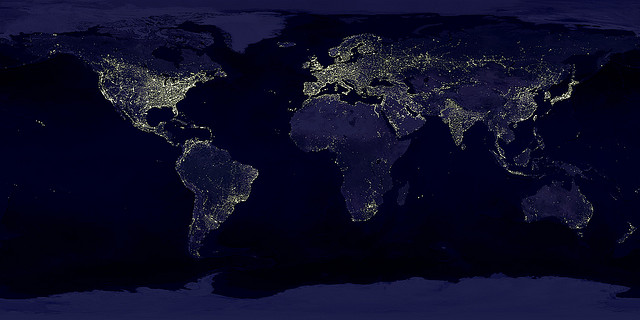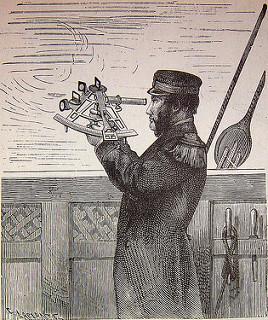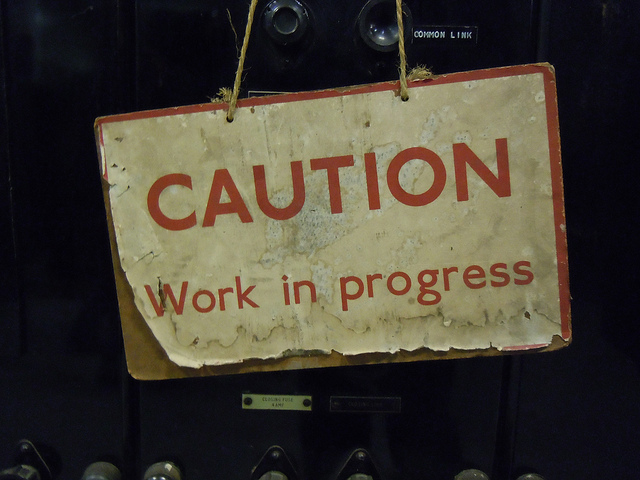Introduction
Progress. Technology. Advancement. These are 3 words we all know and use often. Every time we pull out our cell-phones or turn on the TV or even open a door, we are interacting with tools of science & engineering. I may often use the 2 terms interchangeably in this blog entry because if you really think about it, engineering is almost essentially applied science on a bigger scale (shhh, never tell an engineer that! haha, just kidding). Science tends to study a phenomenon from theoretical perspective and research different areas of study, whereas engineering uses those very ideas to build something. In basic terms, engineering tends to work within the bounds of science, but science is not quite within the bounds of engineering. Regardless of the nuances of applied science versus engineering argument, the idea is that technology is a major component to that link.
In this post, I wish to discuss the future of human technology from a broad sociological/philosophical aspect from the perspective of a dreamer and where we fall short as a species. I won’t get very technical this time because the focus will be on the very people (civilization) rather than on technology itself.
Masters of Technology
The glory of human civilization is built upon the platforms of science, technology & engineering. In broader sense, it is the characteristic we use to define the complexity (or lack thereof) of an existing civilization in the universe (obviously we can only judge ourselves so far). The more advanced a civilization is, the more complex technologies we expect to find. There is something called the Kardashev Scale that scientists have created to differentiate in technology between one advanced civilization to another. This scale was initially 3 types, but I see it sometimes being divided into five levels. Humans are not on this scale yet.
–Type 1 civilization: must harness energy equivalent to all of the local star’s energy that hits the planet. This is within our grasps. Theoretical physicist Michio Kaku has famously said we are 100 years away from becoming Type 1, and the journey from Type 0 to type 1 is the toughest of all as we fight for our very survival. Once we become type 1, we may be able to control Earth’s climate, weather, volcanoes, earthquakes, etc. We would also have nuclear fusion reactors, making coal/oil/natural gas/nuclear fission reactors unnecessary. These current 4 power sources are essentially poisonous to all living things on Earth so nuclear fusion, which is clean renewable energy, is a must for the future of civilization to exist on Earth. This is the civilization like the humans in Star Trek (only humans — excluding the other civilizations from Star Trek).
–Type 2 civilization: must harness energy equivalent to total energy output by the local star. This civilization would have space stations dispersed throughout the solar system (possibly different nearly regions of the galaxy within distances of some light years), bases on several moons/planets, and technologies we can only dream of. They would have mastered nuclear fusion reactor technology and batteries for long-term extremely efficient energy storage. They may no longer need wind, solar panels, or hydroelectricity power sources (except in isolated regions far from fusion reactors). This is the civilization like United Federation of Planets in ‘Star Trek’ and the Empire in ‘Star Wars’.
–Type 3 civilization: must harness energy output of the entire galaxy. This civilization might be so complex that they may have overcome the issue of aging permanently (essentially immortal) by perhaps perfecting their medical science through artificial organs or merging body with android/robot to form a hybrid being. They would have interstellar travel throughout the entire galaxy figured out possibly using wormholes or other exotic materials we have not thought of yet. This is the civilization like seen in Carl Sagan’s book/film ‘Contact’ and Protheans from videogame ‘Mass Effect’.
–Type 4 civilization: must harness energy output of the entire universe (hard to fathom being possible since the universe is continuously expanding at speeds we currently cannot comprehend mentally as a species, making it impossible to estimate total energy of the universe). I presume the beings of this civilization would have evolved enough as a species that they would be able to picture in their minds and comprehend more than the 3 dimensions that we currently are limited to. Obviously, they would be able to travel faster than light in order to harness the power of the universe and be much more intelligent than what we can imagine being possible. Type 4 and type 5 may not even be possible to exist, but it would be like the beings from the movie Interstellar that built the tesseract, a 4-dimension object (one could argue they are in fact type 3 civilization but besides the point).
–Type 5 civilization: we cannot imagine or dream what this civilization would be able to do. Maybe the ability to travel to other universes? Instant beaming from one end of the universe to the other? Maybe the ability to create their own self-sustaining universe the way they want it to be? They would be able to do things that to us, they completely defy our understanding of physics. Clearly, they would be so far beyond us that if we met them, we would think of them as gods – I highly doubt we would even be able to communicate with either type 4 or 5 civilization, and they may not want to! To a type 5 civilization, we would be like tiny critters. How often do you go out of your way to speak to a grasshopper or cockroach on the sidewalk? I tried to think about a civilization this complex but my head exploded.. *mindblown*
When we look at that scale, it is easy to recognize that we humans have a long way to go. We are still very much vulnerable as a civilization from minuscule things like asteroids that could wipe us out instantly, and we will be vulnerable going forward.
We came close to extinction quite a few times already, several times from our doing and others from nature. There was a time when one of our ancestor species before us were down to approximately 1,000 reproducing adults due to being endangered for reasons unknown 72,000 years ago based on genetic evidence we have available today. Most recently, there was the nuclear war threat from the 50s to early 90s – closest we came was the Cuban Missile Crisis in October 1962 and the standoff with both sides on the verge of firing nukes. Generals and intelligence advisers from both sides were pushing for first annihilation strike, which could have ended the world by one simple “Fire”. Thankfully, President Kennedy and Premier Khrushchev were not suicidal & stopped short of a global nuclear war by refusing the generals’ calls for first nuclear strike. We are very much vulnerable from ourselves.
The point of the types of civilization was an attempt to show how our journey has only begun. We are still type 0, but I strongly believe wholeheartedly that we humans can rise to become a great civilization if we simply have people inspired by knowledge and the will to fight & overcome the challenges of life. We have much to learn. We have yet to realize our potential!
Big Picture
What is there to take away from it? Here’s one thought.
We have so much to learn. Many think science is 400-450 years. As an official general field of research, it might be, but I argue science is MUCH older. It goes back to human species older than our current homo sapiens. Science was done unknowingly before anyone had even coined a term for it.
Doors, for instance, have existed for many thousands of years. A door uses ‘wheel and pulley’ for the knob and a ‘lever’ system to open & close (hinges). There is sometimes also a ‘wedge’ to keep the door in place so it doesn’t slam or close. These sort of doors with hinges have existed since the first houses were made before any word for ‘science’ or ‘engineering’ existed. This is just one example of us inventing things and doing science without having any idea of it.
Looking up at the night sky and charting star movement based on observational patterns is another even older example used by ancient sailors, farmers, & nomads in an attempt to figure out where they are, where they are going, what time of the year it is, what time of the day it is, etc. First, it was manually done by hand and through observations. Since then, sextants were invented and used alongside compasses like in the image below. Nowadays, most of us don’t learn it anymore due to the progress in maps, GPS, phones, etc.
Doing science is not something new we just recently came up with. We have potential to follow our ancestors and further evolve civilization. Often, a certain technology is innovated to make some aspect of life easier or possible, but I believe we must innovate to raise the roof and push the bounds. Too often, we humans sit around wasting time on menial things and trying to spread ideologies rather than working on expanding & improving on what is already there. More energy is expended on maintenance rather than on improvement. (I am beginning to ramble at this point like a crazy person lol so I am moving on)
Conclusion
Final thought. When we reflect on the fact of how young we are as a species and new to our universe, we should be awe-inspired by the gauntlet thrown in front of us by mother nature. As a species, we must strive for greatness of a better tomorrow while holding onto humility of the challenges that lay before us. The way is not backwards or maintaining status quo but forward towards the abyss, a deep pit of oblivion. We must move around the edges of the abyss by taking risks in life but at the same time making sure we don’t fall into the abyss ourselves. Take enough risks that you move forward in one manner or another but not too many where you lose it all (heavy gamblers don’t tend to understand that!).
At the end of the day, that is what life itself is – we take risks, hoping to come out a better person through trials and tribulations, but our goal is always to not fall in ourselves or lose ourselves in the process. We are always a work in progress. In our search for knowledge, we must always maintain our morality, ethics, our sense of being, and our personal philosophy of what makes us be us. We must stay humble as we have a long journey ahead of us. We are but infants with no end in sight. Grow and learn continuously, we must. Or perish we will before we even reach Type 1.
I have posted this once before on a previous post, but I will once more.. I grew up inspired by the great astronomer Carl Sagan. What he says absolutely applies here as well:
- My Favorite Books - February 7, 2024
- Review of Carl Sagan’s The Demon-Haunted World - January 31, 2024
- The 75 Greatest Films of All Time - December 22, 2023









